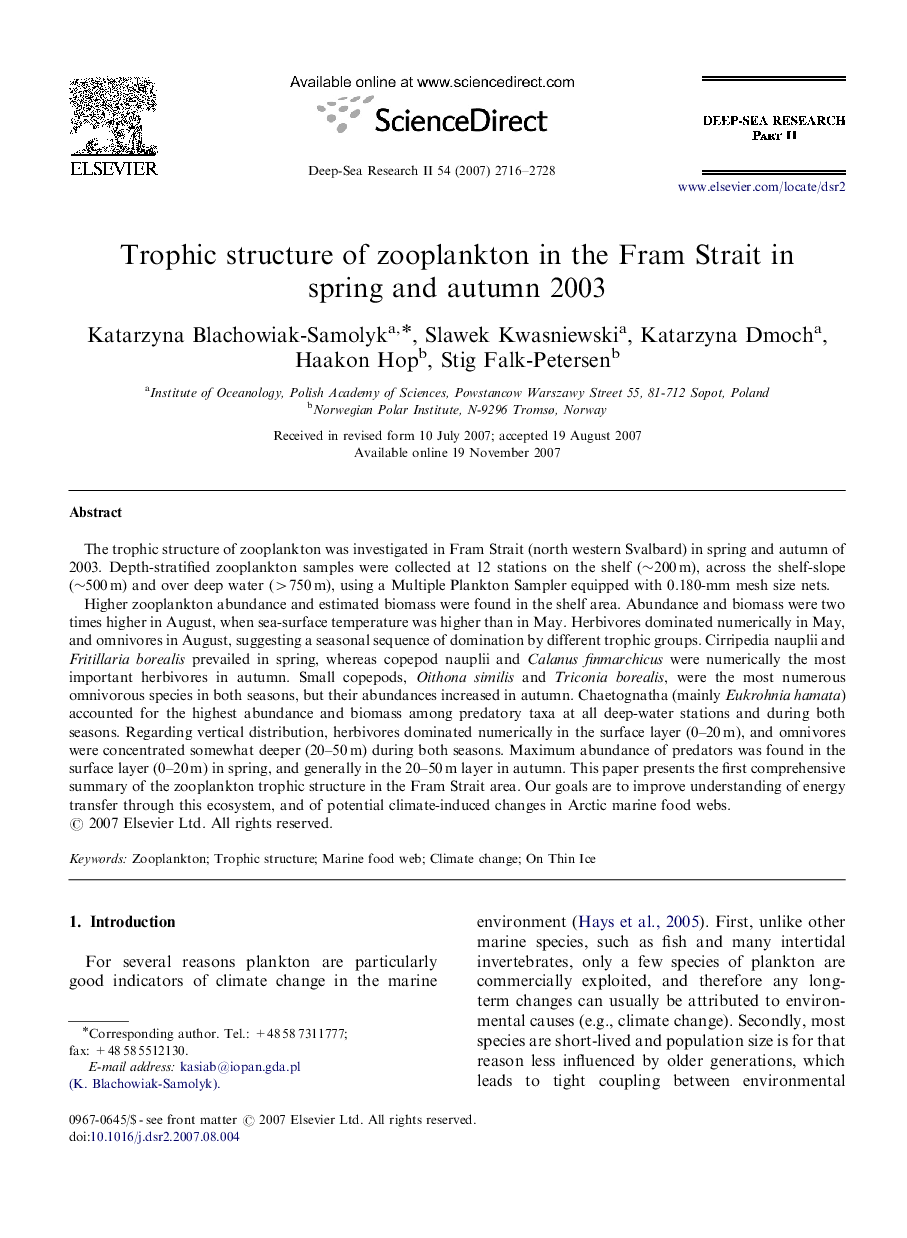| Article ID | Journal | Published Year | Pages | File Type |
|---|---|---|---|---|
| 4538183 | Deep Sea Research Part II: Topical Studies in Oceanography | 2007 | 13 Pages |
The trophic structure of zooplankton was investigated in Fram Strait (north western Svalbard) in spring and autumn of 2003. Depth-stratified zooplankton samples were collected at 12 stations on the shelf (∼200 m), across the shelf-slope (∼500 m) and over deep water (>750 m), using a Multiple Plankton Sampler equipped with 0.180-mm mesh size nets.Higher zooplankton abundance and estimated biomass were found in the shelf area. Abundance and biomass were two times higher in August, when sea-surface temperature was higher than in May. Herbivores dominated numerically in May, and omnivores in August, suggesting a seasonal sequence of domination by different trophic groups. Cirripedia nauplii and Fritillaria borealis prevailed in spring, whereas copepod nauplii and Calanus finmarchicus were numerically the most important herbivores in autumn. Small copepods, Oithona similis and Triconia borealis, were the most numerous omnivorous species in both seasons, but their abundances increased in autumn. Chaetognatha (mainly Eukrohnia hamata) accounted for the highest abundance and biomass among predatory taxa at all deep-water stations and during both seasons. Regarding vertical distribution, herbivores dominated numerically in the surface layer (0–20 m), and omnivores were concentrated somewhat deeper (20–50 m) during both seasons. Maximum abundance of predators was found in the surface layer (0–20 m) in spring, and generally in the 20–50 m layer in autumn. This paper presents the first comprehensive summary of the zooplankton trophic structure in the Fram Strait area. Our goals are to improve understanding of energy transfer through this ecosystem, and of potential climate-induced changes in Arctic marine food webs.
